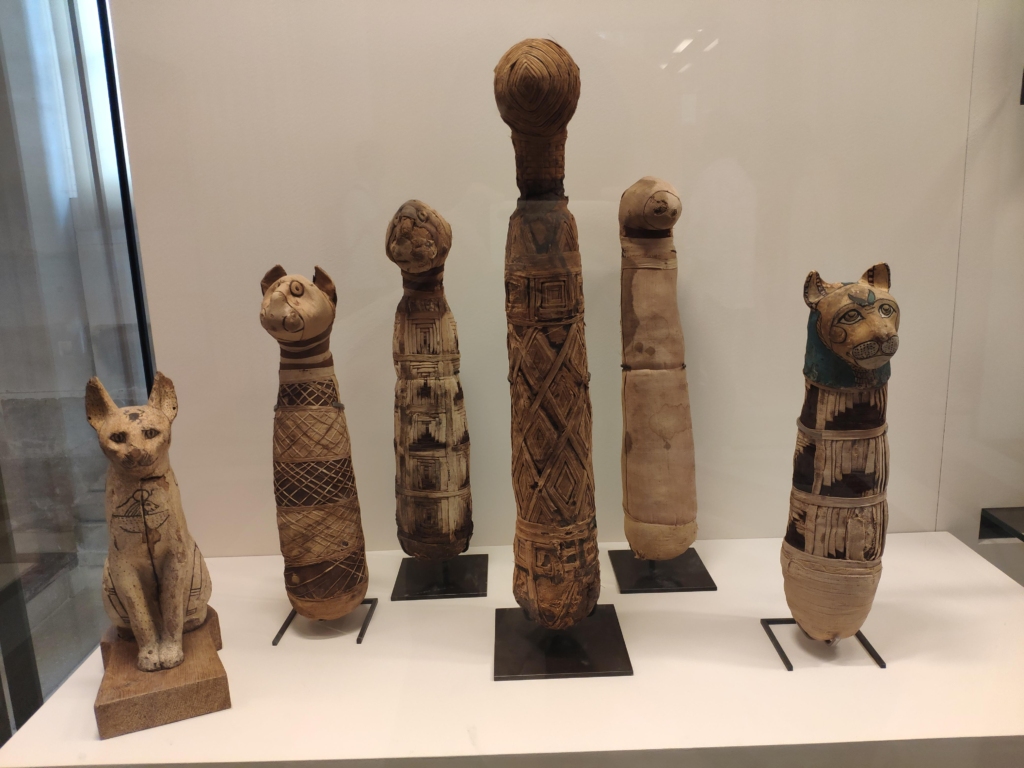13
JulARCE Southern California – OC: Double lecture by Dr. Carlo Rindi Nuzzolo & Dr. Maria Diletta Pubblico
Presented by Dr. Carlo Rindi Nuzzolo & Dr. Maria Diletta Pubblico
- 1:30 PM to 3:30 PMOrange Country - Southern California
- In-Person/OnlineBowers Museum 2002 North Main Street Santa Ana, CA 92706 United States 714-567-3600
- + Add to Calendar
Lectures Information
Lecture 1 – On the Threads Path
 Votive animal mummies represent one of the largest categories of artefacts produced in ancient Egypt. However, Egyptologists have long paid relatively little attention to these artefacts, which were regarded as mere curiosities and an odd expression of later Egyptian religion. This situation has changed over the last thirty years, with the number of projects devoted to this topic growing considerably. Nevertheless, seldom have attempts been made to trace the date and origin of the mummies. The SEAMS project investigates the mummies’ bandage weaves to understand whether they could be markers of specific periods and places. In doing so, this study is set to fill the gap in current knowledge on the contextual data of votive animal mummies and shed light on their manufacture, by using an interdisciplinary approach that blends traditional research methods with new technologies.
Votive animal mummies represent one of the largest categories of artefacts produced in ancient Egypt. However, Egyptologists have long paid relatively little attention to these artefacts, which were regarded as mere curiosities and an odd expression of later Egyptian religion. This situation has changed over the last thirty years, with the number of projects devoted to this topic growing considerably. Nevertheless, seldom have attempts been made to trace the date and origin of the mummies. The SEAMS project investigates the mummies’ bandage weaves to understand whether they could be markers of specific periods and places. In doing so, this study is set to fill the gap in current knowledge on the contextual data of votive animal mummies and shed light on their manufacture, by using an interdisciplinary approach that blends traditional research methods with new technologies.
This lecture aims to present the project, its methodology and the expected results.
Lecture 2 – Graeco-Roman Cartonnage from the Egyptian Western Desert: Investigating Geographical Provenience and Regional Craftsmanship
The professional figure of the Provenance Researcher is becoming increasingly crucial among cultural heritage institutions worldwide. Museums are especially being placed under the spotlight amid recent high-profile cases that showed with unprecedented strength the challenges in managing collections and poorly-provenanced artefacts. Within this context, discussion has arisen concerning methods that can assist in tracking down the geographical provenience of cultural property. Among the plethora of techniques employed by specialists nowadays to detect regional variations, 3D scanning and photogrammetry offer advantages that can aid digital humanists in integrating the scientific methods of their own field of study. The present paper, through case-studies focusing on cartonnage from the Egyptian Western Desert, wants to highlight the role of the two techniques in retracing the geographical origin of unprovenanced pieces kept in museum collections. The paper will be concluded by considerations on the impact of these techniques on the analysis of archaeological data.
Speakers Bio

Maria Diletta Pubblico is Marie Skłodowska-Curie Actions Postdoctoral Global Fellow at the Museo Egizio in Turin and the UCLA Cotsen Institute of Archaeology. Her project titles SEAMS – a Study of Egyptian Animal Mummy Styles seeks to address the current knowledge gap on contextual data of votive animal mummies. She holds a PhD in Egyptology on the cult of the goddess Bastet (2017) and a postdoc on the role of Hathor, Apis, and Osiris in the religious landscape (2023), both at the University of Naples. She is author of several articles on Egyptian religion and animal mummies and maintains collaborations on these topics with various museums worldwide.
She is a member of the Italian-Egyptian Archaeological Expedition at Manqabad (Asyut-Egypt, University of Naples L’Orientale), the Italian-Polish Mission at the Solar Temple (Abu Ghurab-Egypt, University of Naples L’Orientale and Polish Academy of Sciences), and the French Mission at the Bubasteion (Saqqara-Egypt, CNRS Paris).
 Carlo Rindi Nuzzolo has a PhD in Egyptian Archaeology from Monash University and is Marie Skłodowska-Curie Postdoctoral Global Fellow at the Cotsen Institute of Archaeology (UCLA) and the Institute for Heritage Science (XRayLab, ISPC-CNR, Catania). Previously, he held postdoctoral appointments in London (British Museum), Sydney (Macquarie University), Melbourne (Monash University), and New Haven (Yale University). His research focuses on Late Period to Roman Period burial customs, cultural heritage protection, provenance research, and the History of Archaeology. He is an active member of the Japanese Archaeological Mission at North Saqqara (Kanazawa University) and the Dakhleh Oasis Project excavations at Ismant al-Kharab and Mut al-Kharab (Monash University).
Carlo Rindi Nuzzolo has a PhD in Egyptian Archaeology from Monash University and is Marie Skłodowska-Curie Postdoctoral Global Fellow at the Cotsen Institute of Archaeology (UCLA) and the Institute for Heritage Science (XRayLab, ISPC-CNR, Catania). Previously, he held postdoctoral appointments in London (British Museum), Sydney (Macquarie University), Melbourne (Monash University), and New Haven (Yale University). His research focuses on Late Period to Roman Period burial customs, cultural heritage protection, provenance research, and the History of Archaeology. He is an active member of the Japanese Archaeological Mission at North Saqqara (Kanazawa University) and the Dakhleh Oasis Project excavations at Ismant al-Kharab and Mut al-Kharab (Monash University).
His current postdoctoral project, CRAFT (Cartonnage Regionalism in the Ateliers of the Fayum Territory), funded by the European Union, continues his previous work in the oases of Dakhleh and Kharga in the Egyptian Western Desert by investigating cartonnage regionalism and manufacturing in the Fayum Oasis.